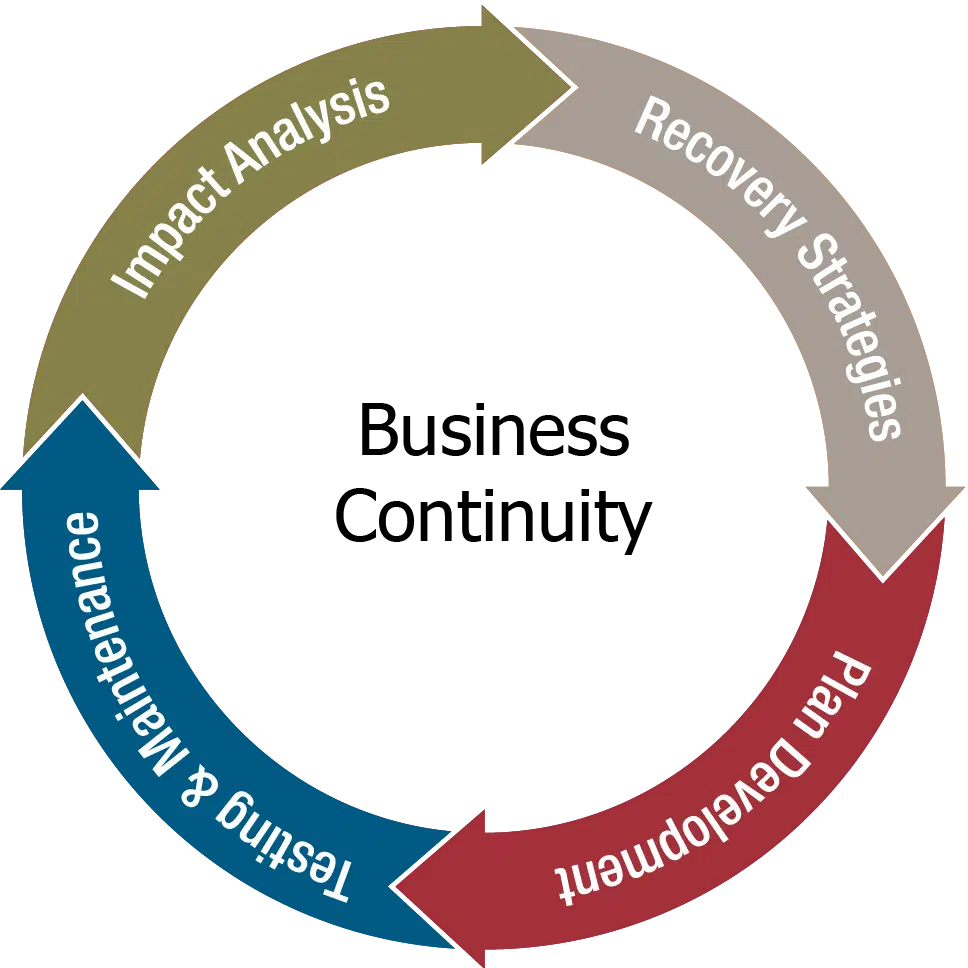
Business Continuity Plan Template
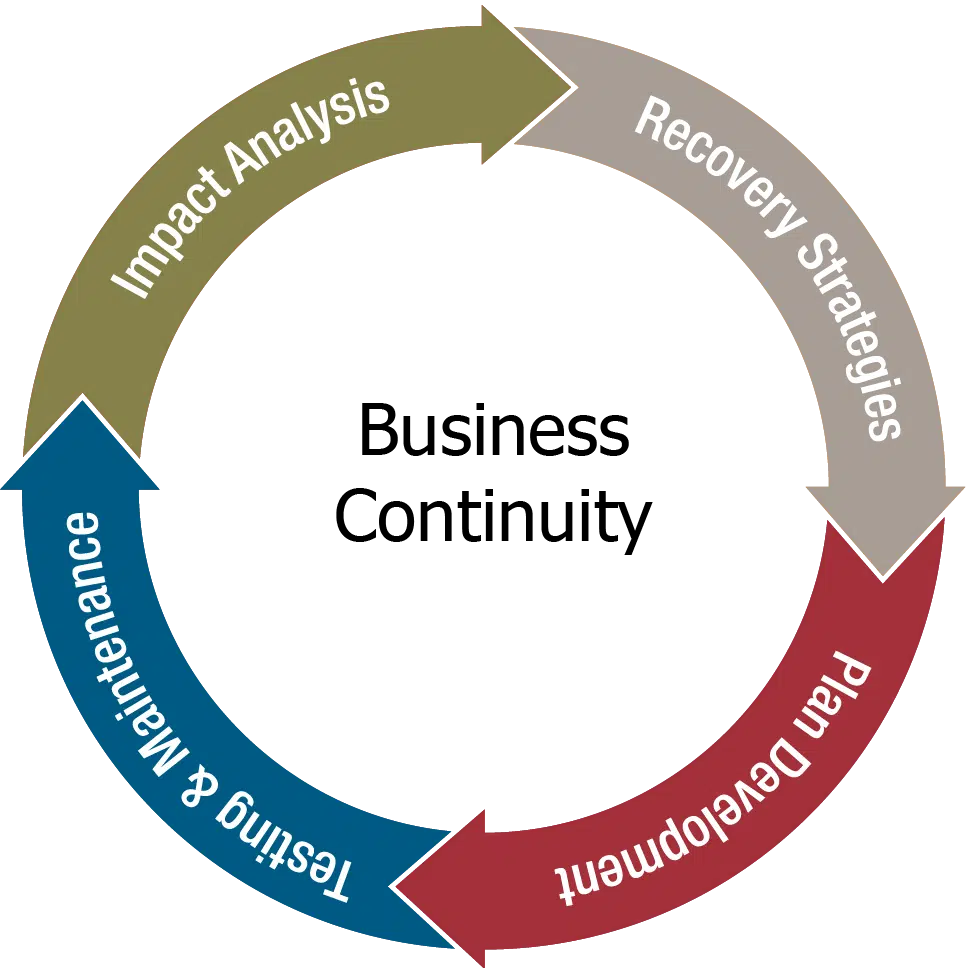
In the fast-paced, unpredictable business environment, practicality is key. No business is invulnerable to disruptions - a power outage, supplier issue, or a full-blown natural calamity - and the repercussions can hit hard (operational halts, revenue losses, and disgruntled customers, to name a few.)
This is where a Business Continuity Plan (BCP) comes in, not as a mere formality but as an actionable roadmap for survival. It provides a clear path to make your business thrive after disasters.
This article will help you identify your business's specific risks, outline steps to mitigate them, and offer a versatile template that gets straight to the point. You'll find real-world examples to understand your plan's effectiveness.
Business Continuity Plan Template
What is a Business Continuity Plan?
The business continuity plan directs and processes all the procedures to follow whenever a company enters a crisis state. This document contains information that ensures its future relationship with stakeholders and success. For example:
- Standard procedures.
- Assets.
- Partners.
- Human resources functionalities.
- Emergency contacts
- Backup arrangements.
With this data, the business administration should be able to handle all sorts of threats, no matter how small or huge they are.
How Does Business Continuity Planning Work?
A business continuity plan considers all risks that may or may not harm business operations. But what exactly are those situations that could hurt a business?
- Fire.
- Floods.
- Weather-related events.
- Cyber attacks.
- Accidents.
- Macroeconomic situations.
Once you have identified risks, you should continue with the following steps:
- Establish how the hazards could affect normal business operations.
- Prepare recovery procedures and safeguards that will help you prevent business disruption.
- Try the recovery strategies in controlled situations to ensure their correct functionality.
- Review each step of the process and update it if necessary.
This is how the business continuity management team ensures a smooth transition and disaster recovery development.
It's all thought so the company doesn't lose money and can return to normal operations ASAP while controlling expectations.
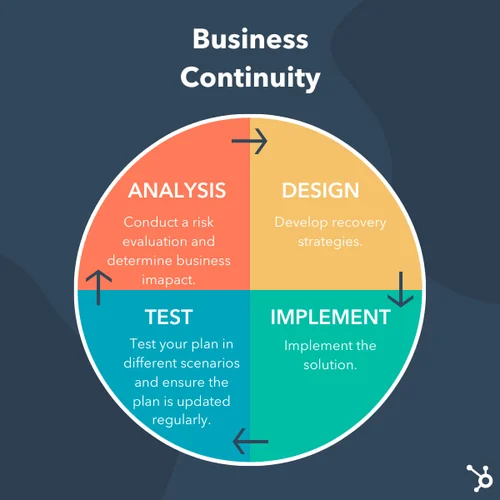
Business Continuity Plans Elements
There are five elements you must consider when preparing a business continuity plan.
Let's break them down:
Potential Risks
Risks are everything you imagine that can affect your company and are established based on a business impact analysis. It helps you identify vulnerabilities and unforeseen events.
A business continuity plan should address them and include descriptions and consequences for your brand. This way, you can anticipate the situation and maintain productivity as you recover.
Let's see an example. Suppose you have a small business in the tech industry. Your risks could be defined as follows:
- Total blackouts.
- Viruses and malware.
- Hardware malfunctioning.
- Data breaches.
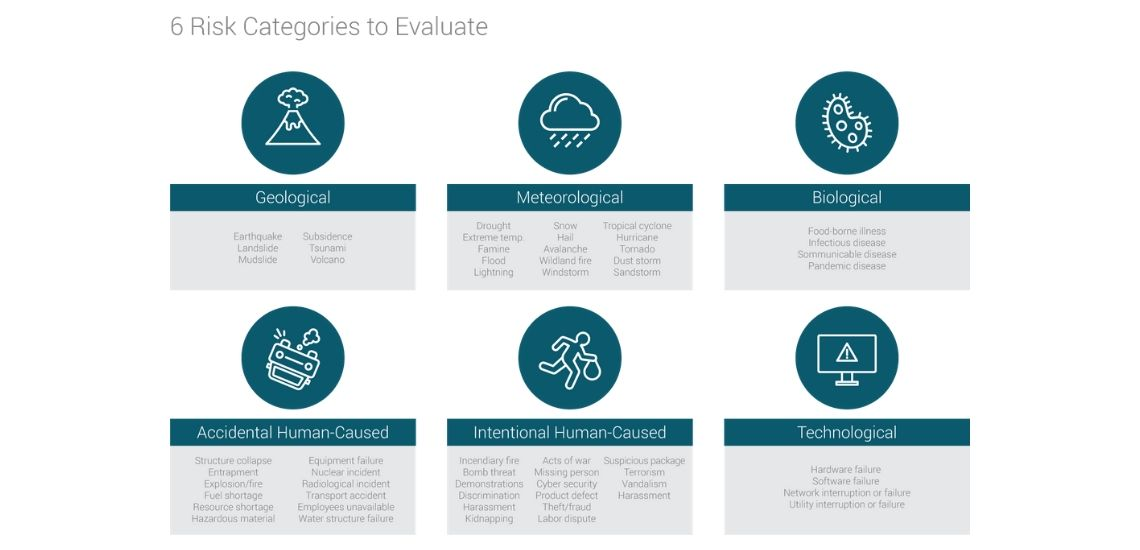
Risk Strategies
The risk strategies are the steps you'll follow in your disaster recovery plan to return to normal business functions. They occur after identifying risks, and you must analyze them and develop a clear path to prevent them from happening again or at least minimize them.
They outline the following:
- Emergency management staff.
- Recovery objectives.
- Resources needed.
- Timescales.
- Everything else your business needs to ensure its critical functions.
Responsibilities
Thoughtfully establish the key team members that will effectively manage these events. You could include different recovery teams depending on the threat difficulty. For example, an entry-level member could handle a simple hardware substitution.
Document it properly, store it where senior management can find it, and solve the problems ASAP. They will prioritize these issues rather than other work processes and allocate resources to fulfill the restoration plan.
Emergency Contacts
Business disruptions tend to create difficult moments, and they also come with communication issues. That's why you have to prepare emergency contacts that allow you to connect with the key members that will make the recovery possible.
You also need to communicate with outside stakeholders and customers to control expectations.
To do this, big or small businesses can:
- Prepare social media posts.
- Develop press releases to communicate issues.
- Use emails with communication templates.
Testing Disaster Recovery Plans
The last element includes all the testing procedures you must follow to ensure a successful company recovery.
Use realistic and hypothetical scenarios where you can use the plans developed. This will help you find improvement possibilities and better actions to implement the project correctly.
Companies tend to do this to confirm the plans' feasibility.
But how is the process developed?
The company prepares a full BCP deployment based on a controlled disruption to test various departments to see if it works.
You can prepare it in advance or with the staff entirely unaware to see better results. This way, you can see the specific areas that need correction and the critical BCP functions that aren't working to overcome the event.
Keep the BCP up to date to ensure your plan will work for the current and future organization situation.
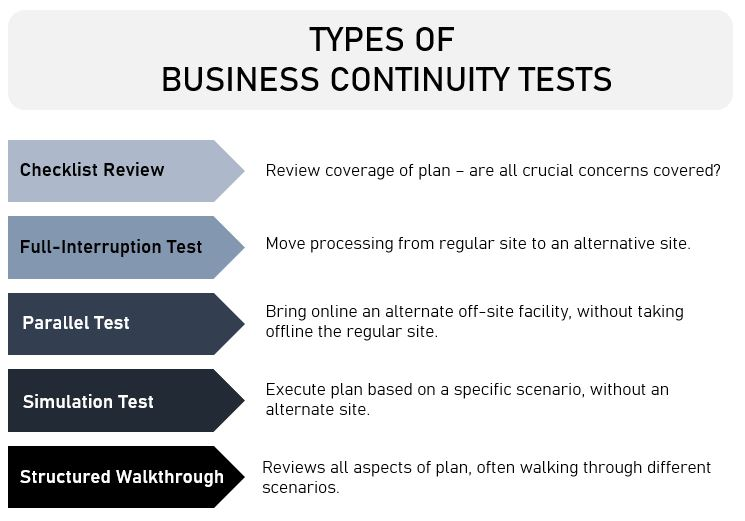
Types of Business Continuity Plans
There are eight types of plans you can prepare for your business. Each will contemplate different aspects in the risk assessment table.
Let's break them down.
Reputational
Customer reviews and reputation help you increase your authority and overall revenue. However, a bad review could be as harmful as natural disasters.
That's why you must monitor your conversations and ensure customer satisfaction.
Environmental
Environmental continuity plans ensure you prepare a safe working environment. Here you consider everything that may affect the office.
Security
Security is reciprocal for both employees and assets alike. Some of the possible risks that could happen are related to a safety continuity plan.
You should prepare a BCP template that ensures key information security – especially for a Saas business or a medical practice – so it doesn't get compromised.
Workforce
This continuity refers to having enough workers to handle all the company processes.
The business must have a plan to ensure that it has a workforce for long-term survival while also giving opportunities to people for growth and development.
Economic
Economic continuity talks about profitable businesses that want to prevent a financial loss. It may be due to human error, power outages, or other issues.
But, since all businesses have bad economic situations, you should write a business continuity plan that reduces the effects of these issues.
Operational
This continuity plan riles on the procedures that ensure a company's functionality.
You should prepare a plan that minimizes losses and prevents sensitive data from leaking. This is easier said than done.
Technological
Every company that relies on technology needs this plan. It ensures that all IT services related to the business will continue working after an eventuality.
The idea is that you can mitigate any situation that prevents you from accessing important data. For example, you could use internal storage systems in a LAN connection instead of Google Drive.
Direct Business Continuity Plan Example
Here are a few continuity plan examples to understand how it works better.
IT Company Continuity Plan
Consider a small tech business with every document in a free cloud storage service like Google Drive. Even though it has different IT teams, the company can't control the document's accessibility.
So, the management staff must create a business continuity plan that includes risk and prevention in case Drive stops working.
This involves:
- Preparing a backup server to avoid significant losses.
- Creating an IT team that ensures server functionality.
- Building a strong firewall and security system against potential hazards.
Now, there are potential threats such as:
- Product failure.
- Sudden outages.
- Potential disruptions.
- Human mistakes.
Based on the information above, the business can create a reliable BCP if a disaster strikes.
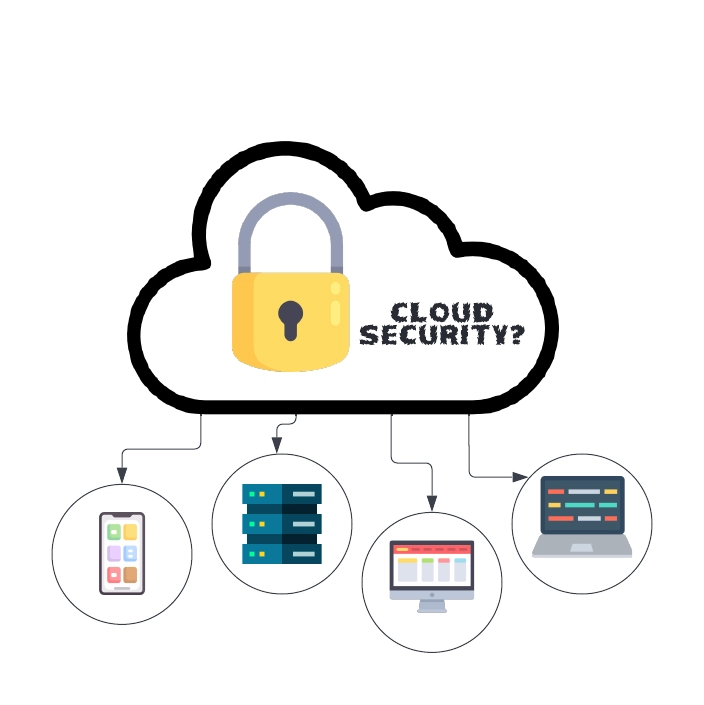
Small SaaS Business Economic Issue
You're the owner of a SaaS business that's just getting started. You have a few recurring clients, but suddenly, your biggest customer cuts down expenses and stops using your product.
You then face a tight economic situation that could make you go bankrupt.
So, a business continuity plan for this case includes risks such as:
- Financial loss.
- Market changes and disruptions.
- Global economic recession.
The company should then consider the following for its BCP:
- Other sources of income.
- How much did they lose with the client?
- If they will have to cut the budget.
- Layoffs projections.

A Worker Leaving the Office
A company has a top performer employee. Both parties are happy, but suddenly the worker decides to leave.
The management department has to determine:
- Who's going to take care of their workload?
- How does this affect the current workflow and other departments?
- If there's someone who can do the worker's role.
The risks that come with this situation may include:
- Understaffing.
- Top employee turnover.
- Slow workflows.
- Personnel miscommunication.
Water Pipe Broken
A tech store business has a broken pipe in the restroom, flooding the place. The situation turns bad quickly due to all the tech-related products in the store.
A good BCP would include the following aspects:
- Is your workplace being threatened by this issue?
- Are all your tech products safe from water?
- How about documentation and employees?
- Will you lose something of great importance?
- Do you have the funds to repair the pipe?
- Do you have the plumber's phone as an emergency contact?
The entire property is an asset. So, the BCP committee must prepare a document ensuring continuity after such a situation.
There are other environmental-related issues, such as:
- Gas leaks.
- Severe weather.
- Earthquakes and tornadoes.
Each has its own prevention methodologies and must be updated before implementation.
How to Prepare a Business Continuity Plan
Here's how to prepare a comprehensive business continuity plan for any company. You can use BCP templates or build yours from scratch, just ensure everything below is included:
Risk Assessment Development
Before you begin your continuity plan, you must develop a risk assessment that considers all the vulnerable aspects of your business.
This study must include:
- Employees.
- Premises.
- Customers.
- Suppliers.
- Business partners.
- Systems and processes.
- Finances.
- Cashflow.
- IT services.
- Computers.
- Vehicles.
- Tools.
- Legal compliance.
- Logistics.
Use your employees to help you identify aspects that you can't see. Since they are experts in their functionalities, they see room for improvement.
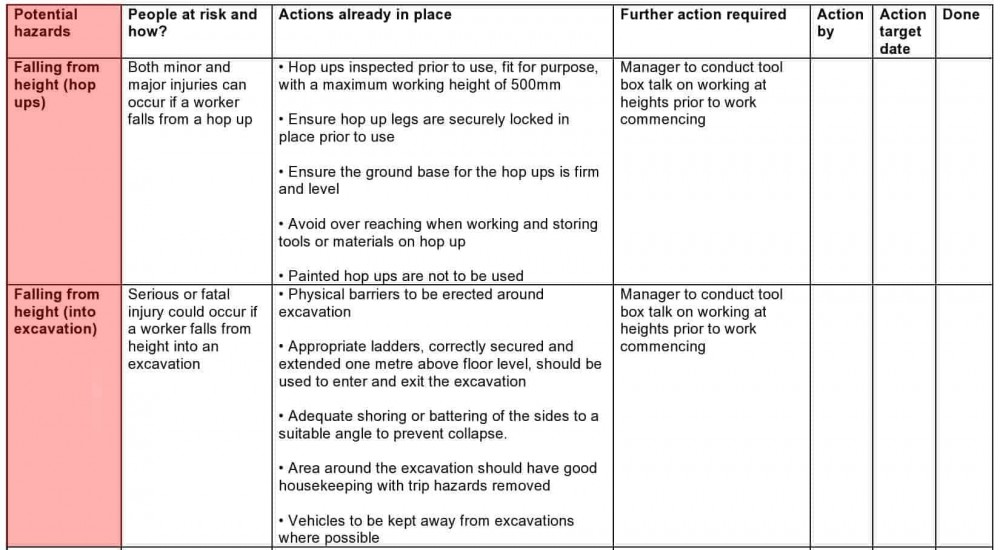
Find the Right People to Develop the Plan
To deploy a business continuity plan, you need managerial personnel to ensure its correct functionality.
Assemble the core team using the following roles:
- Executive Manager: In charge of the team. They will create the BCP most efficiently, so everyone involved can understand.
- Lead Coordinator: Team Leader that will deploy the plan. They are responsible for budgeting, building evacuations, and ensuring recovery procedures.
- BCP Assessment Officer: They can access BCP-related data and are responsible for keeping it safe.
Establish Clear Plan Objectives
The next step requires preparing clear objectives to help the business resume operations after deploying a BCP.
Consider SMART (Specific, Measurable, Achievable, Relevant, and Time-Bound) goals to ensure you have the resources, time, and budget to complete them.
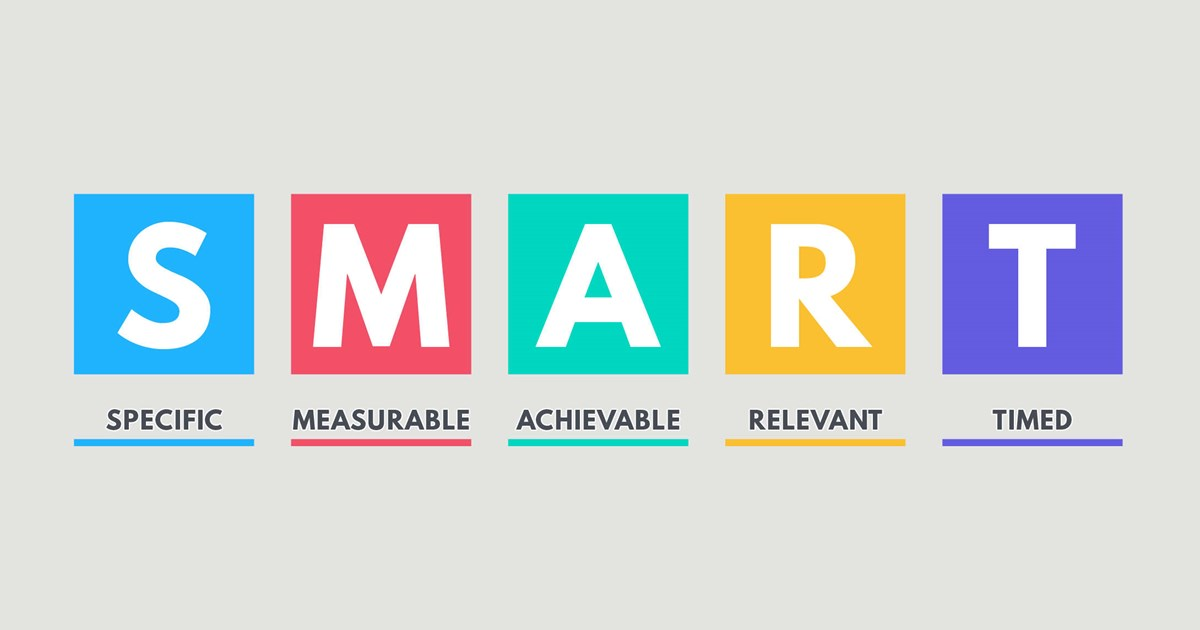
Talk With The Right People
You've already selected the key people to manage the BCP, but since the disaster could occur in every business department, you must talk to people at all organizational levels.
So, interview and record information from key members to help you understand the overall business situation. Carefully select who knows the ins and outs and is aware of improvement opportunities.
Here are some questions you could ask:
- What are the most important processes in your department?
- What are the tools you need to do your work correctly?
- What are the processes that could need improvement?
- What is the worse scenario that could happen in your department?
- Who could get affected by the issue?
Identify Threats and Dangerous Events
After answering the questions above, you can set up explicit threats and critical functions. Align them based on their likeliness to happen and how much each cost for your business.
Prepare a Focused Risk Assessment
To ensure you're on the right track, prepare a localized risk assessment for each department to quantify the risk information you just gathered.
For this, you can ask questions like:
- How much time would it take to recover the department's functionality?
- How much revenue would you lose?
- How much productivity would change, and how would it affect the overall financial performance?
- How many customers would you lose?
Prepare a Business Impact Analysis
Compile the information into a business impact analysis that shows the business's current status. This study checks the primary operations, resources, and functionalities and benchmarks them to discover how long they take to be completed.
Your BCP will take this information and use it when it's deployed.
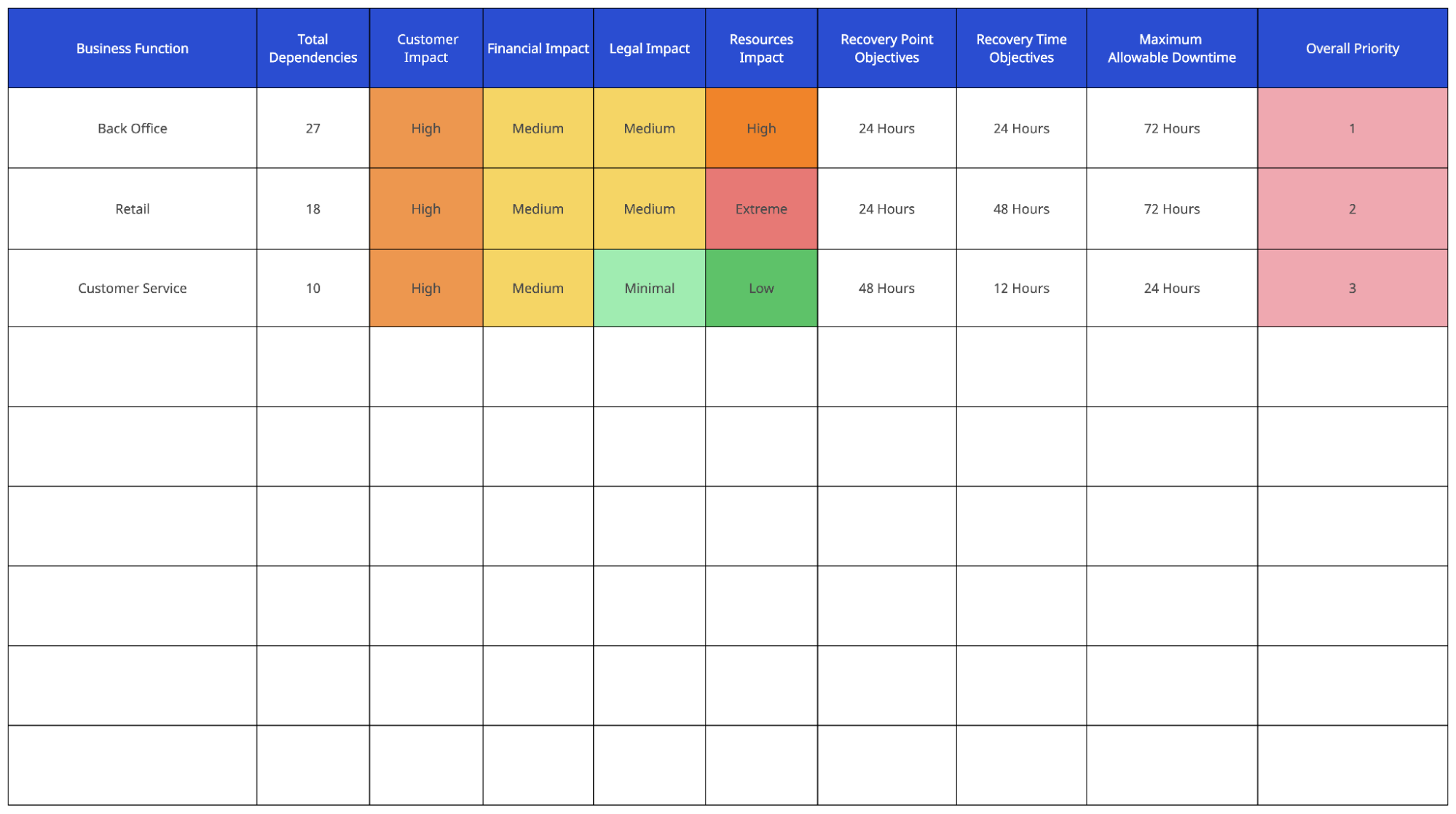
Write a Business Continuity Plan Draft
Prepare the first business continuity plan draft as a guideline and starting point. Include all the actionable information you have gathered above, ensuring you get everything.
Be as detailed as possible and ensure you have the BCP's scope clear when doing it. Still, don't overdo it, because it will have improvements later.
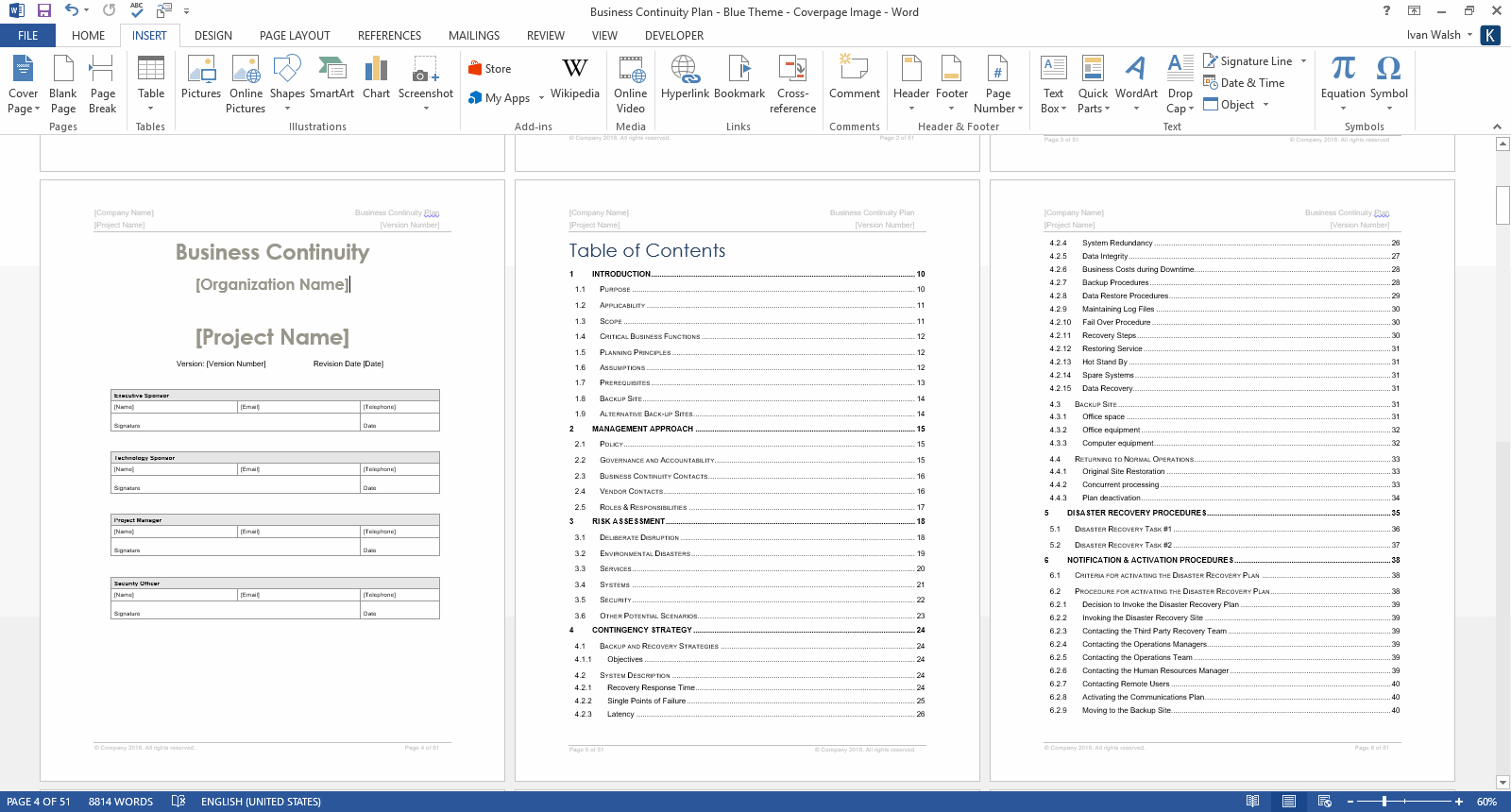
Make BCP Gap Adjustments
Test your BCP with a controlled scenario. Communicate to your staff that you will prepare a simulation, and they must act according to the plan. Find gaps that threats could use to harm your business.
Make notes of what you need to change, suggestions, and other topics that could improve your plan.
Craft the Final Business Continuity Plan
At last, you can create the final version of your BCP and publish it so all parties know where to find it.
You can print it and have it in your office or save it in the cloud and communicate the location to the stakeholders.
Business Continuity Plan Templates
You can use multiple templates to create the business continuity plan. This will allow you to save time and use a proven form that has already been prepared to easily showcase all the information about your business and its threats.
Template #1

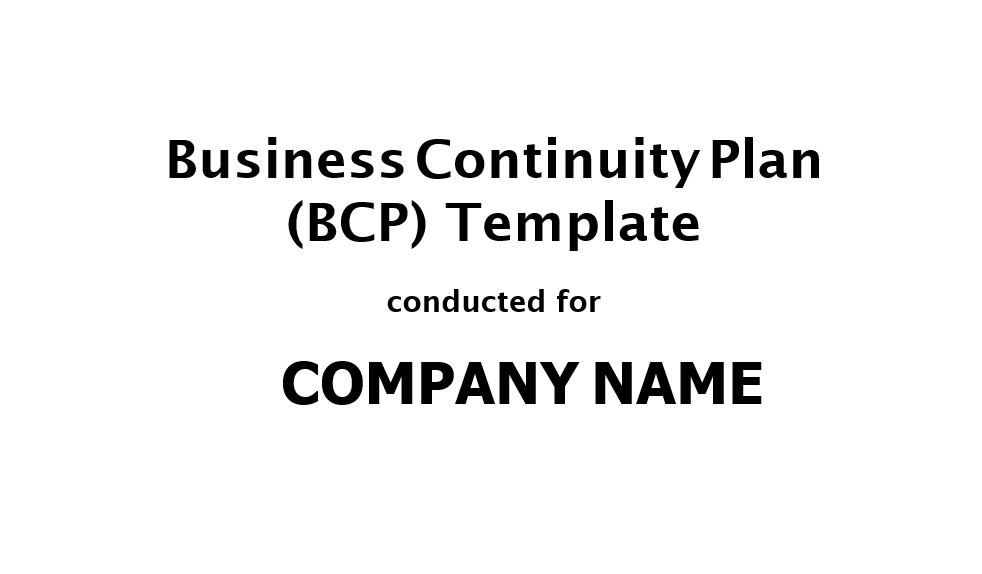
Simple Business Continuity Plan Template - Download Link
Business Continuity Plan Software
Use your templates with productivity softwares like Word or Excel to boost your productivity.
You can get a Microsoft Office 2021 license for your business and start developing intuitive and reliable plans to ensure its continuity in case of an eventuality.
RoyalCDKeys brings you the cheapest and official keys for this and other software.
Business Continuity Plan - Summary
A well-structured business continuity plan is a critical asset for any organization. It ensures that the business can weather unforeseen challenges but also serves as a testament to the organization's resilience and commitment to its clients and stakeholders.
Our templates provide an essential starting point for you, but it's crucial to remember that every business is unique.
Your plan should reflect your organization's needs, risks, and operations. By thoroughly developing and consistently updating your business continuity plan, you are not merely surviving but positioning your business to thrive through adversity. Your stakeholders, employees, and future self will thank you for it.















